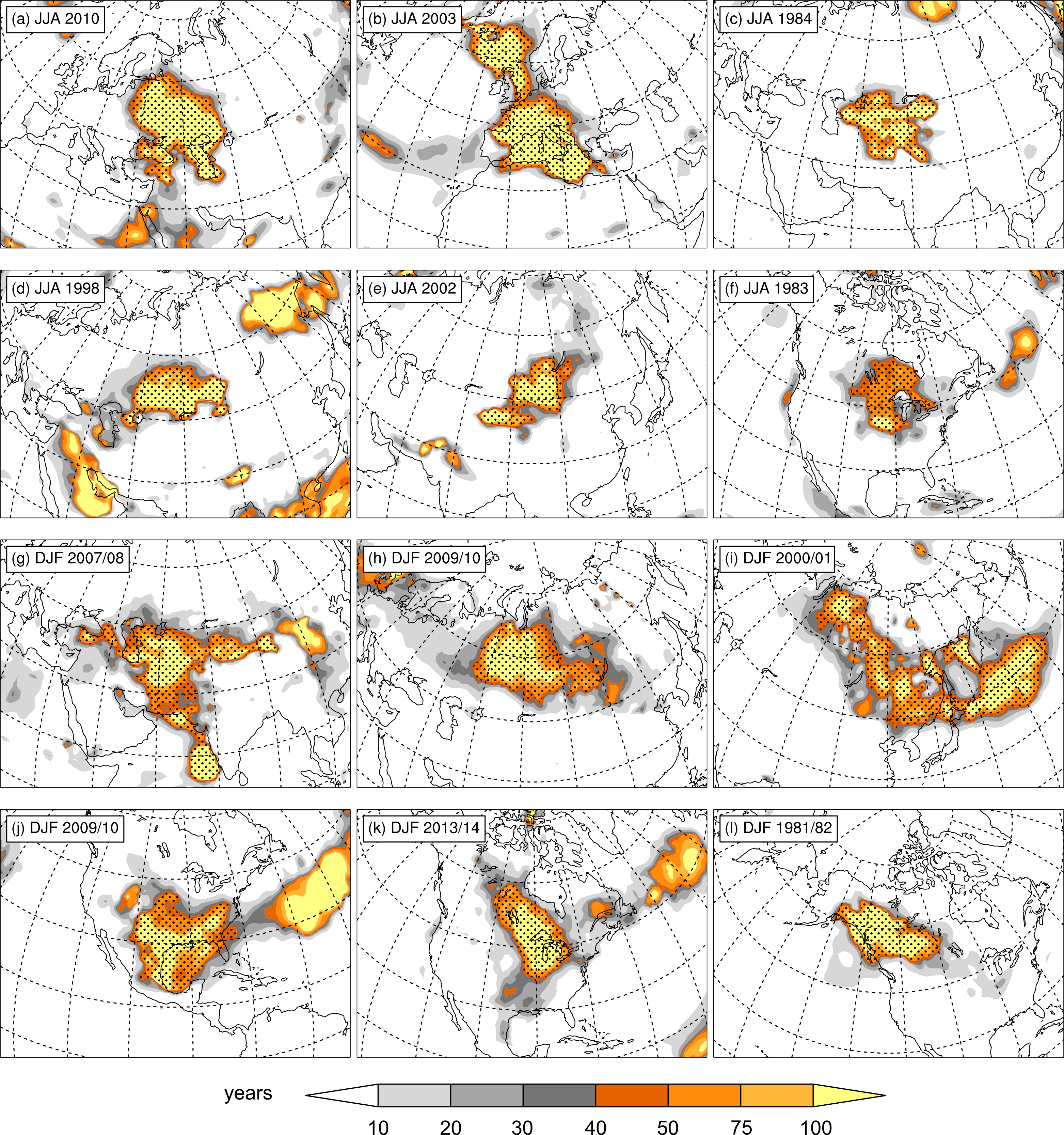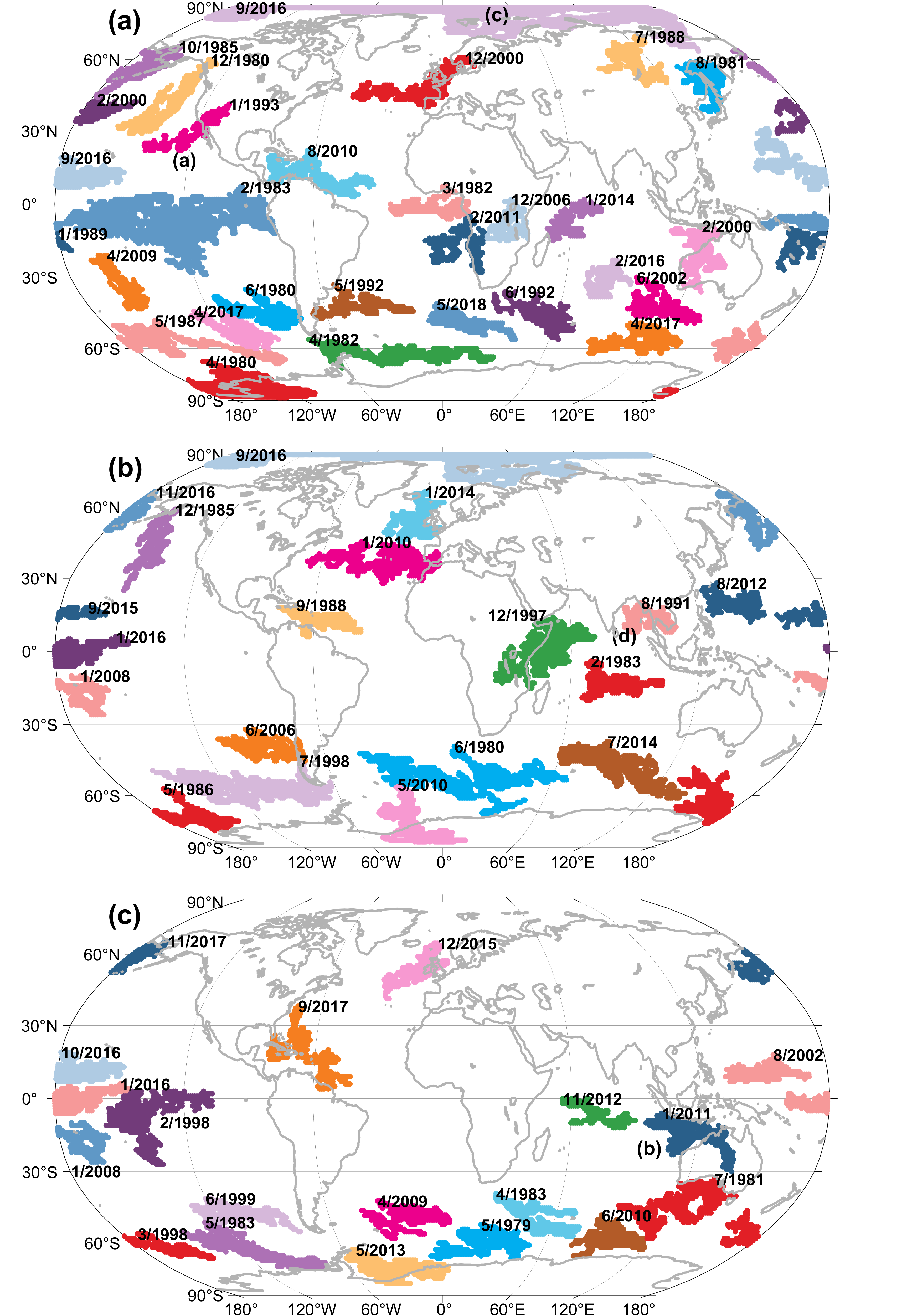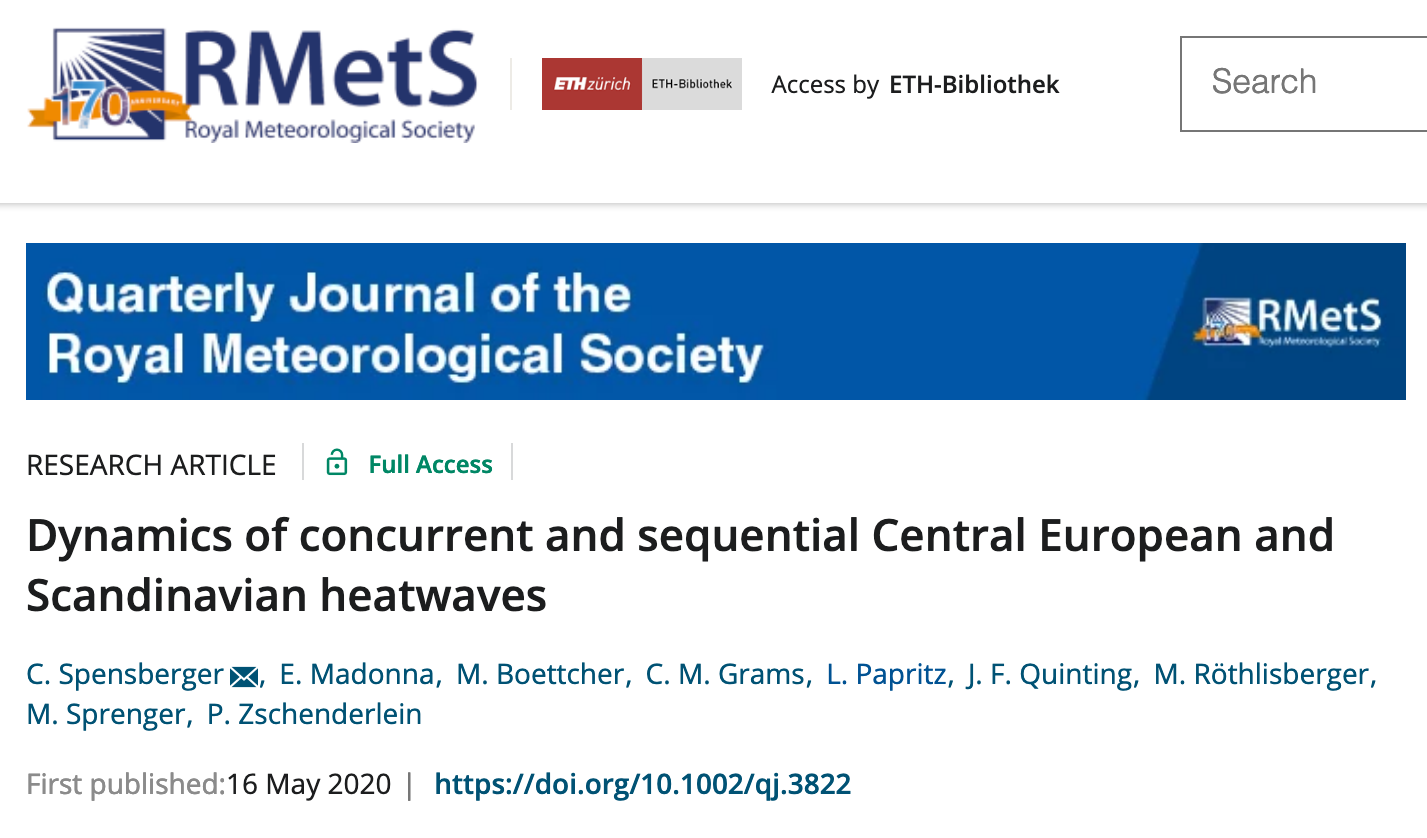
A new paper on identifying and investigating seasonal extremes accepted in J. Climate
Seasonal extremes are difficult to study in the observational record because, by the definition of the word extreme, only very few such seasons occurred at any location on the globe. In a new INTEXseas study led by Matthias Röthlisberger and in collaboration with colleagues from the group of Reto Knutti at ETH as well as […]

INTEXseas at the virtual AMS 101th annual meeting
We are very much looking forward to attend the first virtual AMS annual meeting on 10-15 January 2021 where we have the opportunity to present work from the INTEXseas project. The presentation by Heini Wernli on “Characteristics and dynamics of extreme seasons – a research topic at the interface of weather and climate” provides an […]

Philipp Zschenderlein joins INTEXseas!
Philipp joins us from Karlsruhe Institute of Technology (KIT), where he recently obtained his PhD. Philipp is an expert on heat wave dynamics and intensively studied heat waves across Europe from a Lagrangian point of view. Philipp now joins the INTEXseas project as a PostDoc. In INTEXseas, Philipp will investigate, among other things, under which […]

A new INTEXseas paper on extreme wet seasons
In a study led by Emmanouil Flaounas we identified and studied the occurrence and synoptic dynamics of extreme wet seasons unsing ERA-Interim and an extensive collection of weather feature identification climatologies. In this study we employed a temporally flexible definition of “wet seasons” and their extremes by identifying at each grid point the 90-day periods […]

New paper on concurrent and sequential Scandinavian and Central European heatwaves with INTEXseas co-authors
Together with colleagues from Karlsruhe Institute of Technology (Germany) and University of Bergen (Norway) we have analyzed the dynamical mechanisms that lead to concurrent and sequential heat waves in Scandinavia and Central Europe. Such events are socio-economically relevant, because the affected area of concurrent and sequential heat waves can far exceed the area affected by […]
